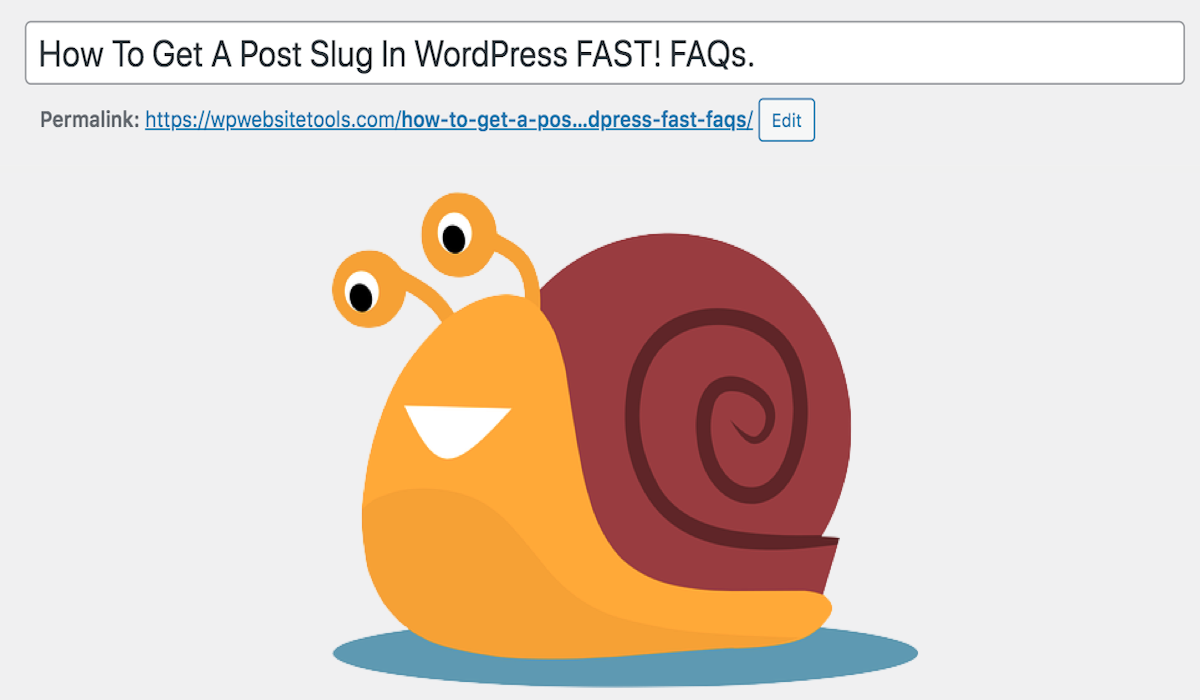Disclosure: This post contains affiliate links. I may receive compensation when you click on links to products in this post. For an explanation of my Advertising Policy, visit this page. Thanks for reading!
How to get a post slug in WordPress.
The post slug in WordPress is just the portion of a URL that comes after the domain name.
For example, if you have a website at example.com and you create a new blog post with the title “My First Blog Post,” the post slug would be “my-first-blog-post.”
However, sometimes by default, WordPress will create a post slug based on the published date of your blog post.
For example, if you have a website at example.com and the date you are publishing your post is 06/05/2022, your post slug in WordPress could be “index.php/2022/06/05/my-first-blog-post.”
There may be times though when you want to customize the post slug.
For example, if you want to use keywords in the URL for SEO purposes.
Fortunately, WordPress makes it easy to change the post slug.
Simply click on the “Edit” link next to the post slug field and enter the desired text.
Once you’re finished, just click on the “Update” button and your changes will be saved.
If you wish to change it, simply edit the field and click “Update”.
Keep in mind that changing a post slug will cause any links pointing to the old slug to break.
As such, it is always best to redirect the old slug, permalink, to the new slug, permalink.
To do this, simply get the “Redirection” plugin and redirect the old slug’s link to the new slug’s link.
That’s all there is to it!
Is a WordPress post a slug?
If you’ve ever struggled to come up with a catchy title for your blog post, you may have considered using a “slug.”
But what exactly is a slug, and how does it differ from a regular WordPress post?
A slug is simply the part of a URL that identifies a particular page or post. In other words, it’s the unique identifier for your content.
By default, WordPress generates slugs based on the title of your post. However, you can also manually edit the slug to something more SEO-friendly or descriptive.
For example, if your post is about “5 Tips for Choosing the Perfect Domain Name,” you might want to use the slug “5-tips-for-choosing-the-perfect-domain-name.”
In contrast, a regular WordPress post is simply the body of content that you create.
This can be anything from a short blog post to a lengthy article or even an audio or video file.
Once you’ve created your post, you can then add a title, description, and any other relevant details.
Once published, your post will appear on your WordPress site just like any other piece of content.
So, in short, a slug is not the same as a WordPress post.
A slug is simply the part of the URL that identifies a particular post, while a WordPress post is the actual body of content.
While you can leave the slug as the default generated by WordPress, we recommend editing it to something more descriptive or keyword-rich for better SEO.
How do I create a custom post type slug in WordPress?
In WordPress, a slug is the portion of a URL that typically comes after the domain name.
For example, in the URL www.example.com/blog, “blog” is the slug. By default, WordPress assigns slugs based on the title of a post or page.
However, it is often helpful to create custom slugs that are more descriptive or keyword-rich.
This can be especially useful when using custom post types.
Fortunately, WordPress makes it easy to create custom slugs for any post type.
Simply go to the post in question, just below the title, and you’ll find the “permalink”. Click “Edit” next to it and enter the desired slug in the “permalink” field.
That’s all there is to it!
By taking advantage of this feature, you can make your WordPress site more user-friendly and search engine-friendly at the same time.
Where do I find permalinks in WordPress?
If you’re new to WordPress, you might be wondering where you can find permalinks.
Permalinks are the permanent URLs to your individual blog posts and pages.
You can find them in your WordPress dashboard by going to “Settings”>”Permalinks”.
The settings page will give you a few different options for how you want your permalinks to be structured.
For example, you can choose to have WordPress use the post ID, or you can choose a more custom structure that includes the date and/or category.
Ultimately, it’s up to you how you want your permalinks to be structured.
But once you’ve made your choice, be sure to click “Save Changes” at the bottom of the page.
Otherwise, your changes won’t take effect!
Please note that if you are changing your permalink structure site-wide and already have published posts and/or pages, you will need to redirect those posts/pages to their new URLs (permalinks), or else they will be broken.
How to get a post slug in WordPress. Conclusions.
To sum up, a slug is the part of a URL that identifies a particular page or post.
WordPress generates slugs based on the title of your post. However, you can also manually edit the slug to something more SEO-friendly or descriptive.
A regular WordPress post is simply the body of content that you create. It can be anything from a short blog post to a lengthy article or even an audio or video file.
So, in short, a slug is not the same as a WordPress post. A slug is simply the part of the URL that identifies a particular post, while a WordPress post is the actual body of content.
If you’re new to WordPress, you can find your permalinks in your WordPress dashboard by going to “Settings”>”Permalinks”.
From there, you can choose how you want your permalinks to be structured. Just be sure to click “Save Changes” when you’re finished!
And that’s it! That’s all you need to know about slugs in WordPress.
We hope this post has been helpful. Good luck!


